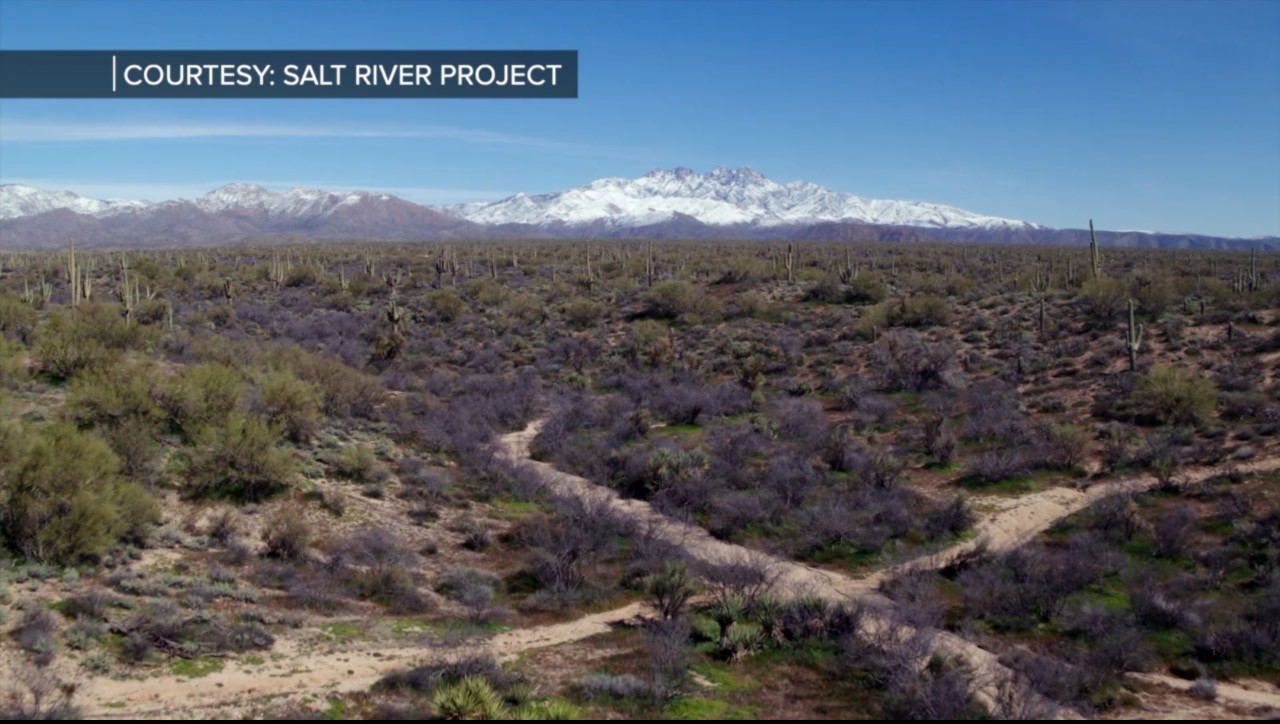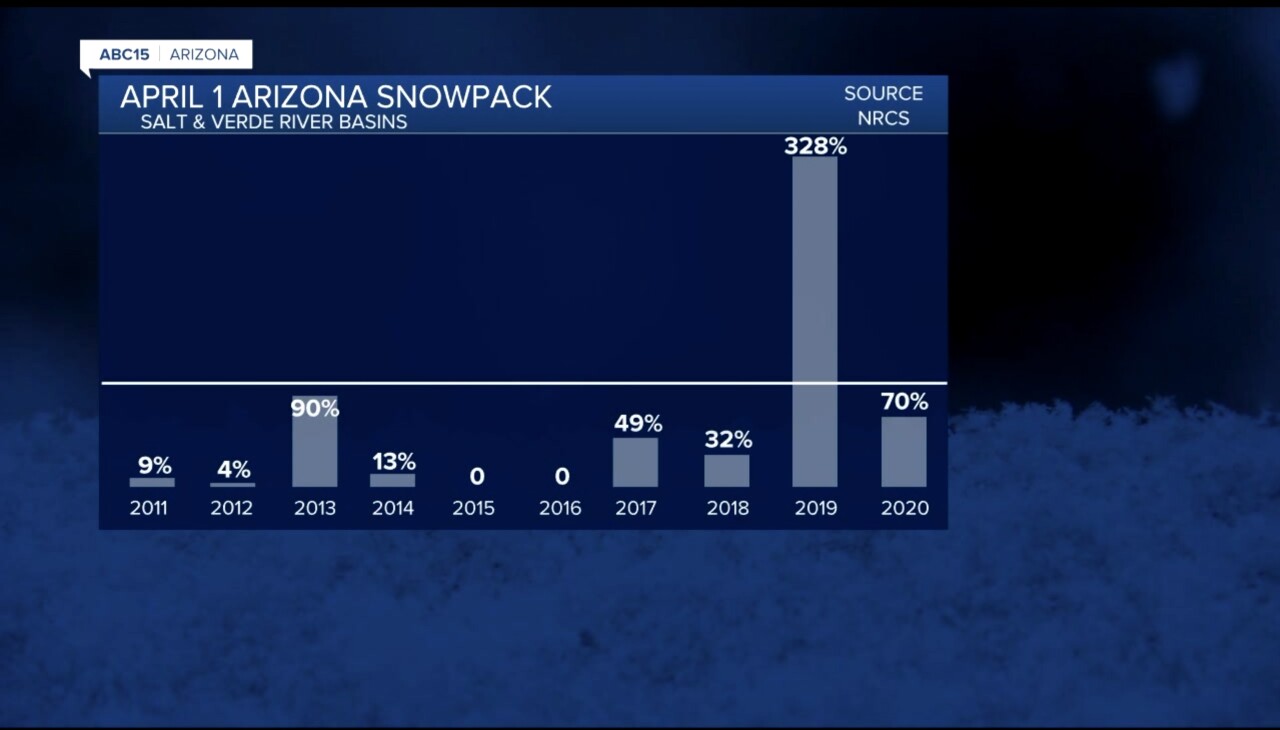With spring around the corner, mountain snow that Arizona picked up this winter is starting to melt, running off and replenishing our reservoirs, rivers, and streams.
As our climate changes, however, the snowpack in Arizona is becoming less dependable.
Rising temperatures are causing less mountain snowfall.
This map, created by the climate science group, "Climate Central," highlights how this is a problem in Arizona, shown in green, along with many western states.

Nearly 100% of Arizona remains in some form of drought, too.
Tim Skarupa, a Senior Water Rights Analyst and former hydrologist with the Salt River Project, plans for drier-than-average winters like this past one.

He says the snowpack this year has been "fairly low" which has been the case for nearly the past decade for both the Salt and Verde River basins. They supply as much as half of the Valley's water.
Data from the Natural Resources Conservation Service, which measures snowpack in the U.S., shows below to well-below seasonal snowpack normals for the majority of the 2010s.

This applies to the beginning of the runoff season in March and the peak of the season in April. The line on the chart shows where a "normal" snowpack should be.

Ninety percent of the water stored behind the reservoirs comes from snow and winter precipitation, Skarupa tells ABC15.

The year 2019 was the only time in the past 10 years that both the Salt and Verde River basins had an above-normal snowpack. Those are the years SRP depends on, Skarupa says.
“One thing that’s great about the Salt and Verde reservoir system is ...really takes just one wet year out of these dry, extended drought periods to recharge our system.”
Data from SRP shows the entire reservoir system was 64% full in March of 2019, before the snow from that historic winter melted. One month later, it was 79% full.
A healthy winter along the Verde Basin the following year had reservoir levels as high as 98% at one point.
As of the beginning of this March, levels are down to 77%.
SRP is prepared when water levels go even lower.
“Even when we get into the extended droughts, we’re able to manage our water supply, and then as the reservoir system drops, we augment that with more groundwater pumping within our service territory,” Skarupa says.
Another tool that helps: water conservation from its customers.
Skarupa states that demand has gone down thanks to programs like "Water-Use It Wisely," outreach, and better efficiency, helping boost the water supply.
As our community grows and our climate changes, it's vital that we all do our part to make a difference.
If you have examples of how climate is affecting your areas, questions about what it all means, or ideas that can help us all be more climate-friendly, e-mail us at ImpactEarth@abc15.com.



